35+ Tips for Your First Time in Japan: What You NEED to Know
16 min readI will never forget my first time in Japan: ten days of pure wonder and awe at literally everything—the food, the politeness, the convenience stores, the trains, the shops, the pedestrian crosswalks, the...
The post 35+ Tips for Your First Time in Japan: What You NEED to Know appeared first on Bucketlist Bri.
Disclosure: This post may contain affiliate links, which earn me a small commission from bookings at no extra cost to you. Thank you for reading and supporting my blog!
I will never forget my first time in Japan: ten days of pure wonder and awe at literally everything—the food, the politeness, the convenience stores, the trains, the shops, the pedestrian crosswalks, the animations, and the overall sheer cuteness of it all. 🥹
Since then, I’ve been able to return to Japan three times, each for more than one month.
I’ve been fortunate to have solo traveled Japan from Tokyo to Hiroshima to Kyoto and Osaka, around Hakone and Fuji, and to slow live and housesit for three months in Tokyo over a summer.
Each visit has brought me new insights, which I wish to share in this post!
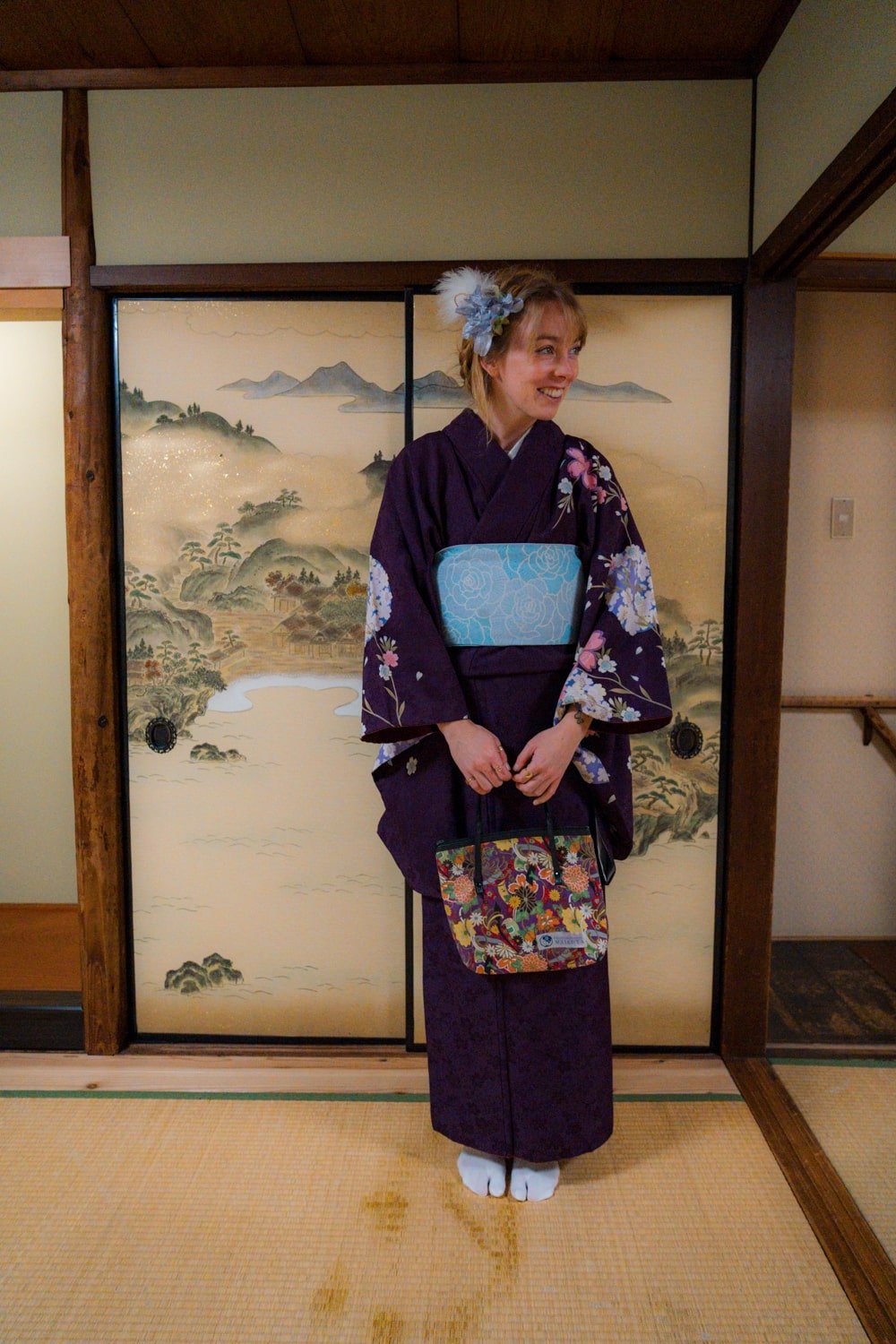
If you’re worried about perfectly planning and organizing your first trip to Japan, don’t—there’s no need!
On my second trip to Japan, I virtually planned nothing except for my housesits—everything else I experienced as it came, which taught me what to do and what not to do as a first-time and repeat visitor.
Once you start researching and familiarizing yourself beforehand, you’ll feel much more confident when you land, even as a complete newbie to Japan.
Here is everything I wish I had known before I visited Japan, including tips for navigating transport, cultural etiquette, avoiding crowds, packing, and more!
Japan for First Timers: 35+ Tips I Wish I Had Known
Below, I’ll break down bite-size tips for first-timers visiting Japan by category (e.g., prep, tech, transport, etiquette, etc).
I’ve pooled these from my first-hand experiences and research, having spent more than six months in Japan. If you have questions, please comment below!
Preparation & Planning Your First Trip to Japan
1. Keep your Japan itinerary flexible
There is so much pressure to plan the “perfect” trip to Japan, especially if it’s your first time.
I get it! You want to see and do it all.
But spoiler alert—you won’t be able to see and do it all with one trip. 🥲
I highly encourage you to plan your trip to Japan as a wishlist rather than a rigid plan to allow for spontaneity.
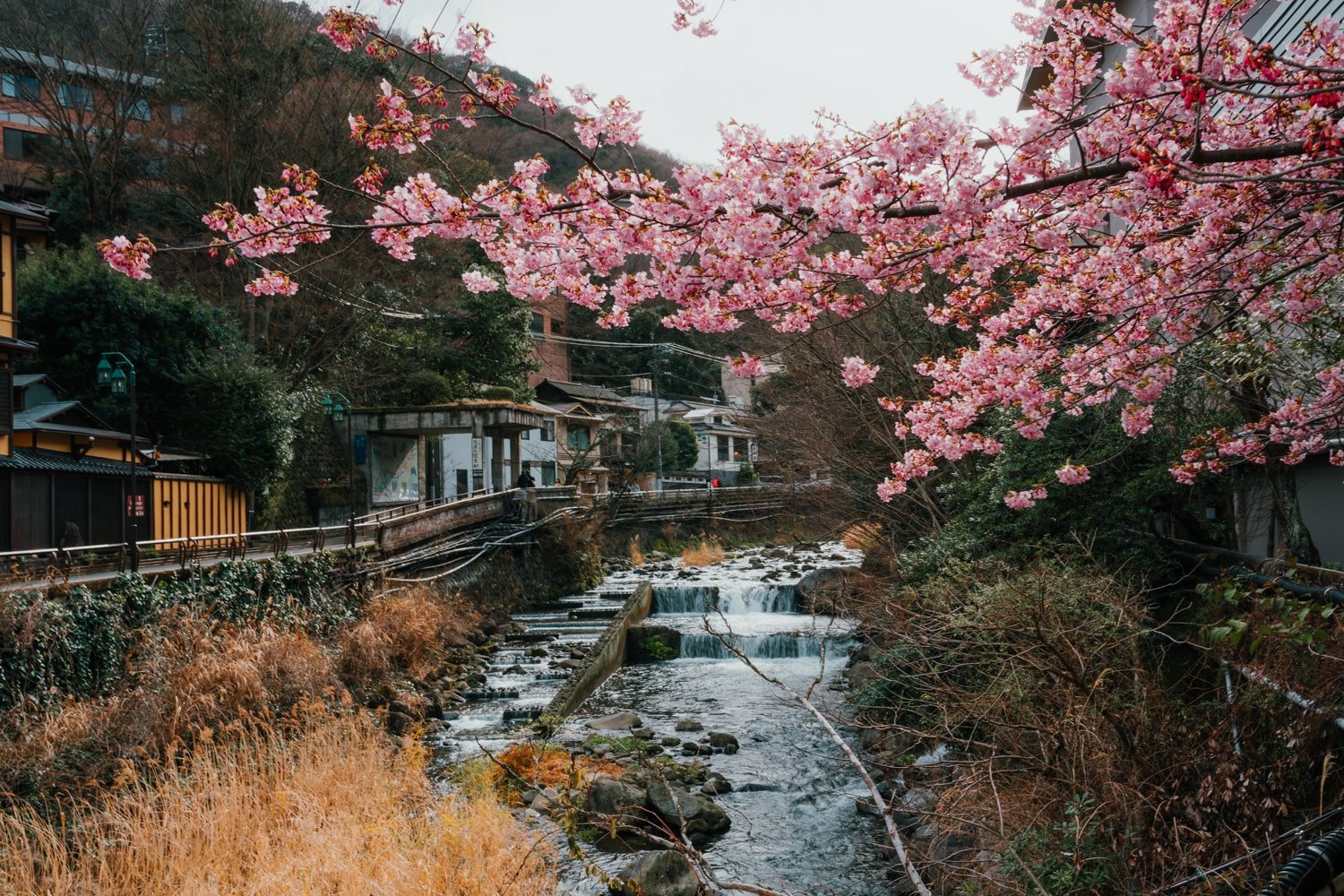
2. Time your visit with the shoulder seasons
Spring (cherry blossoms) and autumn (fall foliage) are popular times to visit Japan but are incredibly crowded.
In case you need to hear this, you don’t have to visit Japan to see the cherry blossoms to make your trip “count.”
My three Japan trips have been during the shoulder seasons: April–May, May-August, and February–March. And I’m so glad.
Winter and early spring are quieter and cheaper, and you’ll love having more options and flexibility to plan your trip last minute.
🌸 Plum blossoms actually bloom earlier and are, in my opinion, just as beautiful and even more fragrant than cherry blossoms.
3. Needing reservations is (mostly) true
Everyone says you HAVE to make advanced reservations for Japan, and it’s partly true.
However, many advanced reservation requirements, such as Shibuya Sky, are overcrowded and there are just as good alternatives (Tokyo Skytree, for example!).
That said, there are activities you’ll want to book your ticket in advance for, such as:
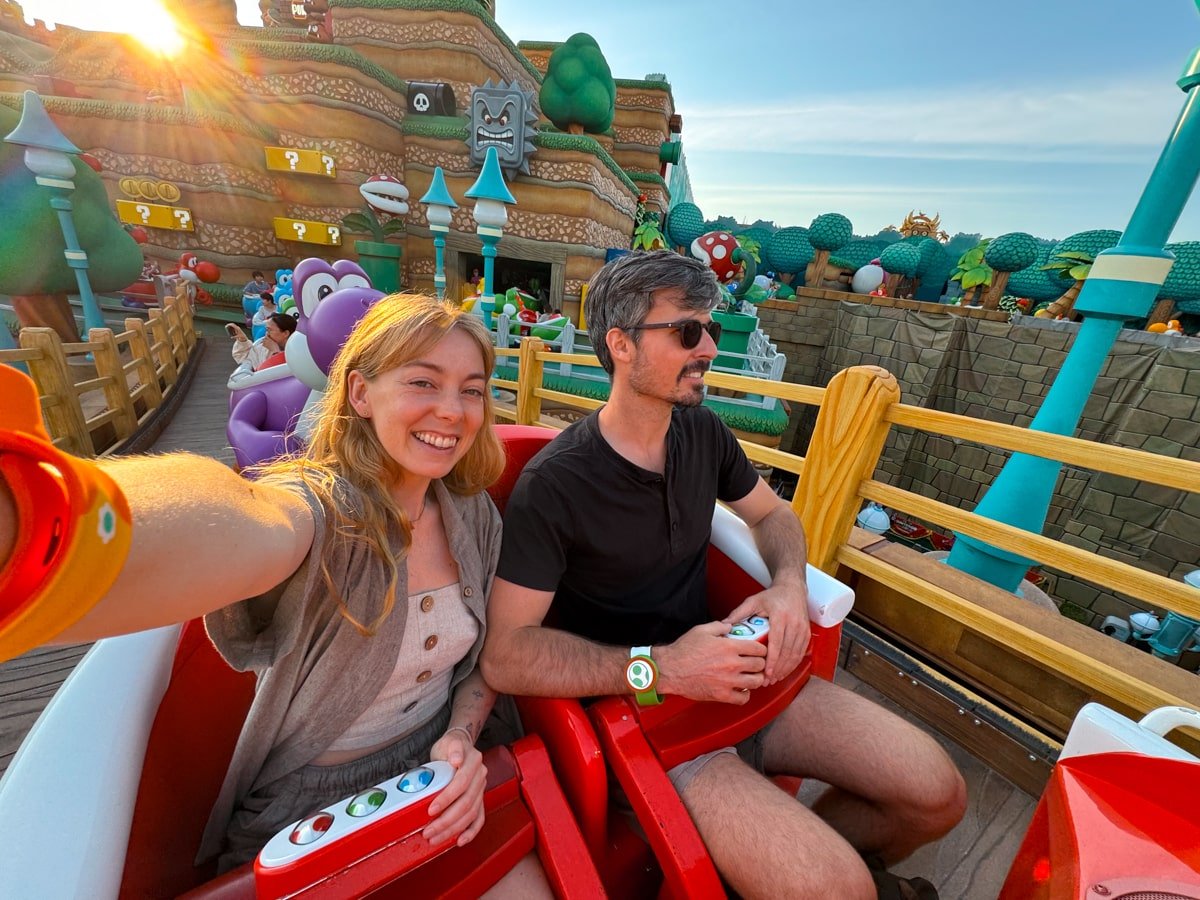
Tickets for attractions such as Tokyo Tower, Tokyo SkyTree (Asakusa), and other non-mainstream attractions will typically be available the same day.
Apart from attractions, hotels and hostels should also be booked in advance—although note that there were many nights when I booked last minute and always found good options (not the best, but decent).
For solo female travelers, for example, female-only floors in capsule hotels will sell out sooner than mixed dorms, so if this is an essential criterion for you, keep it in mind.
Lastly, a quick note on queuing for food. Reservations are wise for cafes, restaurants, and cocktail bars that you really don’t want to miss.
Otherwise, unless it’s a maid cafe in Akihabara, you typically won’t need to reserve but instead show up very early to snag a seat or start queuing. Otherwise, you could wait 1-3 hours for your turn for a bowl of ramen at Ichiran, for example.
🍜 You don’t have to eat at Ichiran to experience authentic Japanese ramen! There are so many underrated local ramen shops to try. If you eat at Ichiran, go to a neighborhood that isn’t as frequented by tourists and eat during the week.
4. Get budget-friendly travel insurance for Japan
While healthcare in Japan is legit, it can be expensive without insurance.
To protect your travels and health, sign up for travel medical insurance. It costs less than a sushi dinner for two in Tokyo and is seriously worth the peace of mind.
I recommend SafetyWing, which costs roughly $28 for two weeks of coverage (or $56 every four weeks).
Best part? You can schedule your start date so coverage starts immediately upon landing in Japan.
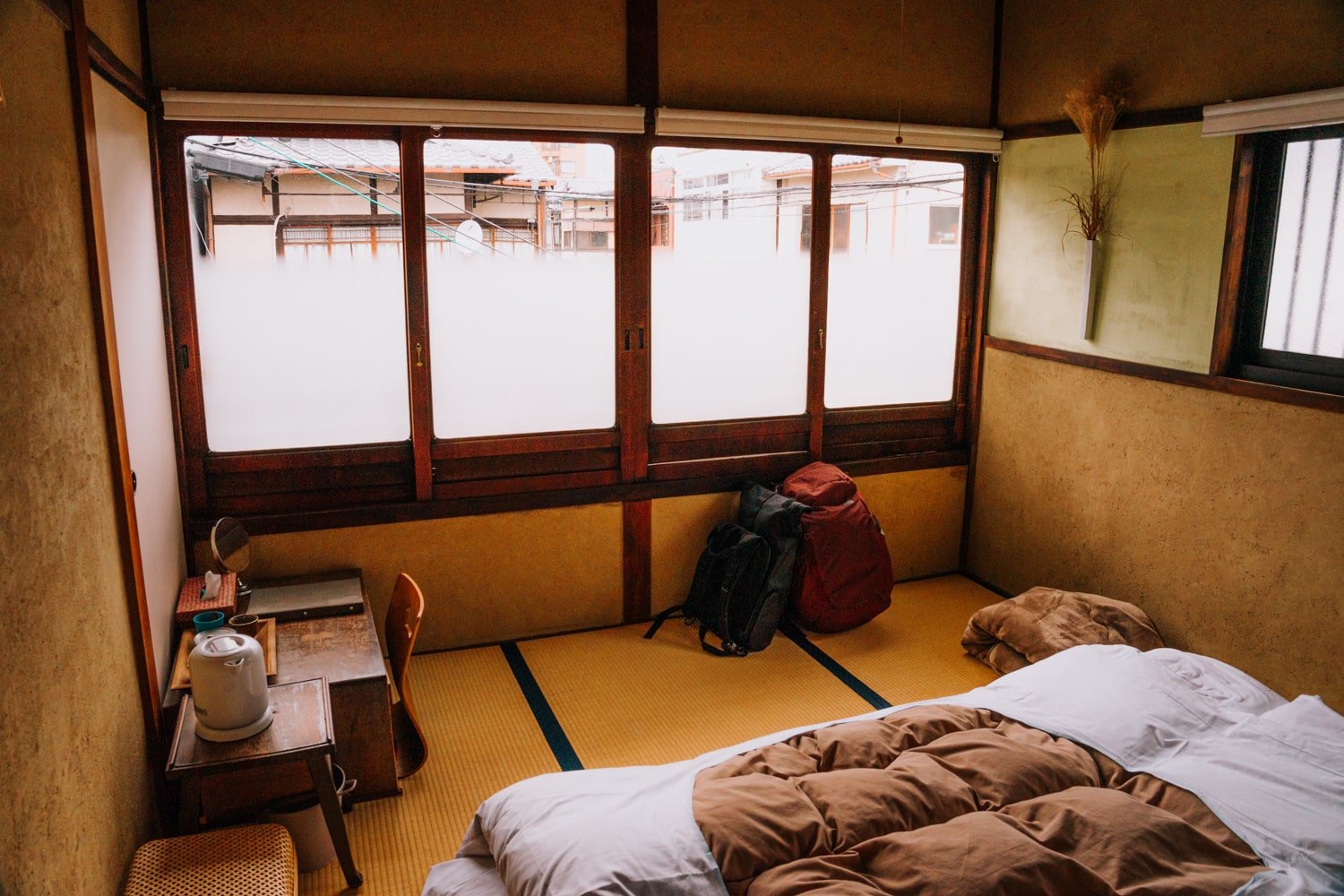
5. Carry your passport with you everywhere (it’s the law)
Foreign tourists are obligated, by Japanese law, to carry their passport ID with them at all times.
If you don’t want to carry your original (preferring to leave it at the hotel), you might get away with carrying a quality copy. However, whether it’s accepted or not would be up to the officer.
Tech & Apps for Japan
6. Get an eSIM for internet access
Make sure to purchase an eSIM to access the internet while in Japan (without changing your phone number!).
You can do this in advance so that you only have to switch on the data line when you land in Japan.
While there are many free WiFi connectivity spots in major cities, accessing data via eSIM is the easiest and most convenient way to stay connected using apps such as Google Maps and Translate.
An Airalo Japan eSIM costs about $6.50 for 2GB of data, which I used for all my trips to Japan.
💝 Use my code BUCKETLISTBRI3, to get $3 off your first eSIM.
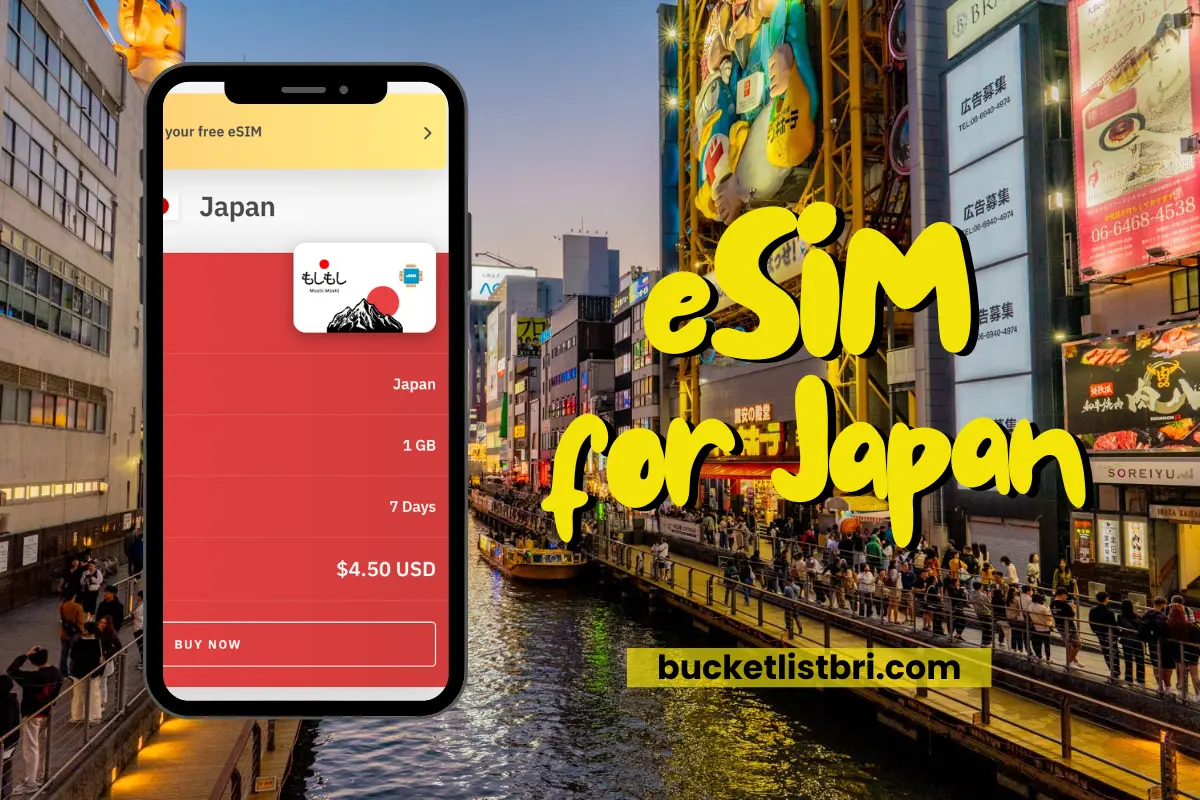
7. Download 1-2 navigation apps
I swear by Google Maps for navigating the train/metro lines in Tokyo, Osaka, Kyoto, etc. It’s never failed me.
However, some people like using Japan Travel by Navitime for public transport routes and schedules. I find it more complicated than using Google Maps, which tells you the exact platform, train number, and more.
If you just take your time reading the signs as you walk through the station (they’re in English in all the places I’ve been), you won’t get lost.
Surprisingly, I find Tokyo’s metro system to be one of the most manageable. Osaka’s stations are a bit trickier…
For taxis, use the GO app—it’s like Uber but for taxis in Japan.
8. Use a translation app for menus and single questions
You’ll need Deepl, Google Translate, or Apple Translate on your phone to translate menus, signs, or easy conversations.
Sometimes, the photos of menus don’t accurately translate, resulting absolutely hilarious phrases. When in doubt, use Deepl to ask your waiter for recommendations (pointing at the menu for aid!).
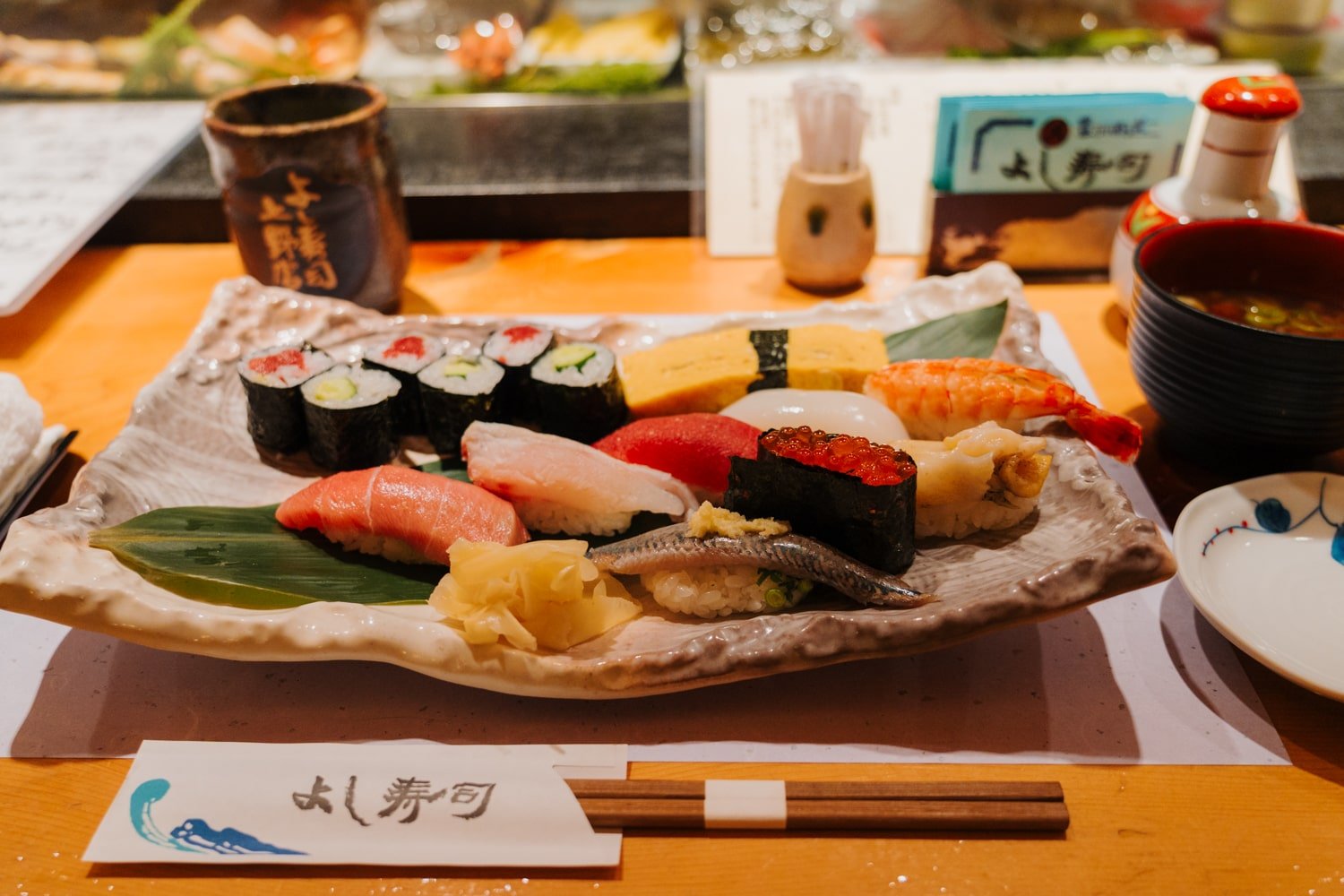
9. Learn a few basic phrases in Japanese to enrich your experience
Above all, make an effort to connect with locals. I know Japanese is difficult for first-timers, but effort works wonders and, I believe, makes up for any bad pronunciation.
You can really tell how much locals appreciate your willingness to learn their language. I have absolutely loved the funny moments and experiences that have come from trying to mime my way through a conversation. 😅
When I spent a few months in Japan this year, I practiced Japanese daily on Duolingo. The app makes language learning fun (and addicting, lol)!
Transportation Tips for First-Timers
10. Get a rechargeable IC Card (transport card) instead of buying single-use tickets
Whatever you do, save yourself the hassle of buying single-use tickets for trains and metros. Instead, get a Suica or Pasmo card for public transport—it’s faster and more convenient than buying tickets.
There are several types of IC cards in Japan. Which one you can get depends on which region you buy yours in.
For example, if you buy an IC card in Tokyo, you’ll get a Suica card. If you fly into Osaka and buy one at the airport, you’ll get an Icoca. No matter which type you get, they all work the same with minor benefits and differences.
Due to chip unavailability, buying physical IC cards in Tokyo is not currently possible. Instead, if you have an Apple phone, you can download an IC Card directly to your Apple Wallet or Apple Watch and recharge it with funds directly from your wallet. Read the instructions here.
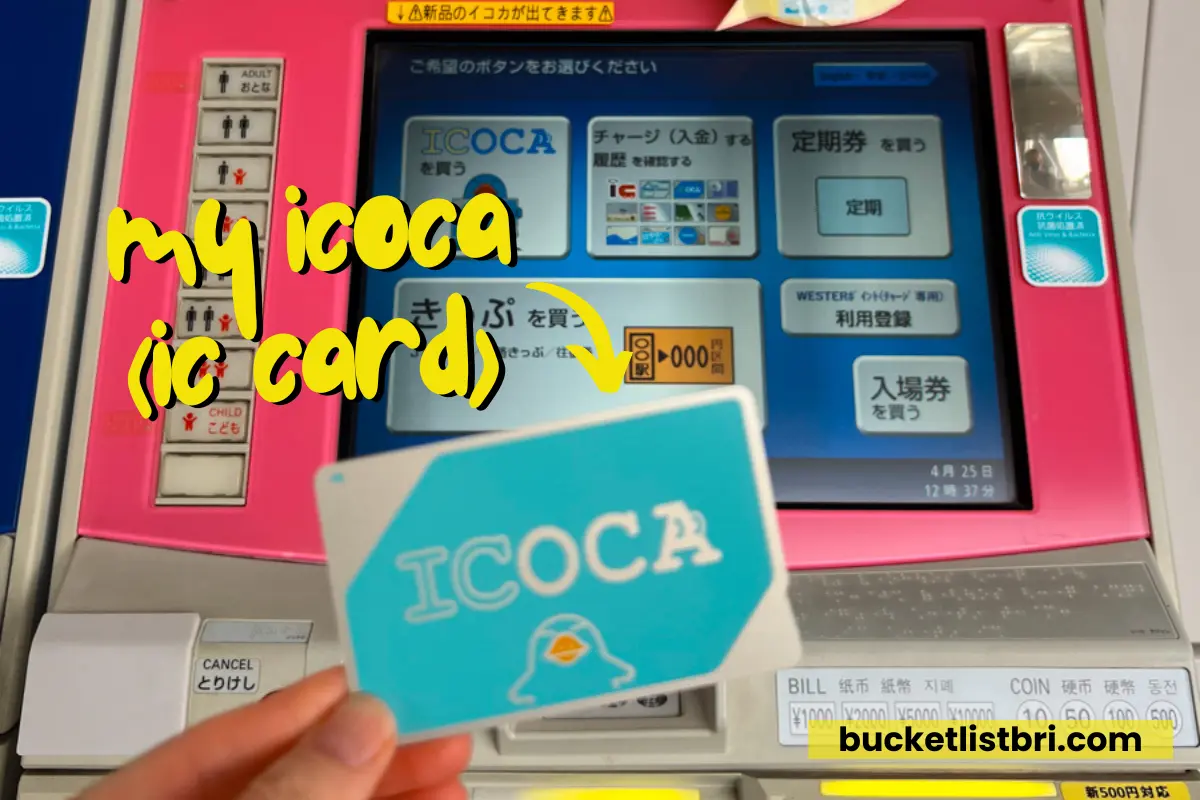
11. You probably don’t need the JR Pass (Japan Rail)
Many first-time visitors to Japan make the huge money-wasting mistake of purchasing an expensive JR Pass when they don’t need one.
A 7-day JR Pass costs around 50,000 yen or USD 320, so it would be worth using it two or three times within a 7-day timeframe.
For example, suppose your entire trip is only 7-10 days and your itinerary is jam-packed, traveling between major cities such as Hiroshima, Tokyo, Osaka, Sapporo, etc.. In that case, it might be worth it if you can use it within the timeframe.
However, if you intend to buy a Japan Rail Pass to go down to Kyoto/Osaka and then stay there for five days between the two, your pass won’t save you money for the return trip. You might as well buy your Shinkansen tickets separately ($95 one-way).
The real value of a JR Pass comes with traveling more remotely and regionally, for example, in Kansai, Tohoku, or Kyushu. The pass can also cover local JR trains, buses, and ferries. You can check the cost of regional passes here.
But if you’re traveling between the triangle of Tokyo-Kyoto-Osaka, you can save yourself the hassle of getting a JR pass (depending on your side quest plans and itinerary date).
12. Purchase Shinkansen Tickets on the day of
On that note, you can purchase Shinkansen tickets at the station without reservation on your departure day. There are so many Shinkansen trains that you don’t likely need to reserve in advance.
The only instances in which you may need to reserve seats in advance are for larger groups (to sit together) or for scenic views (e.g., Mt. Fuji).
You can read more about Shinkansen lines on the JR Pass blog here.
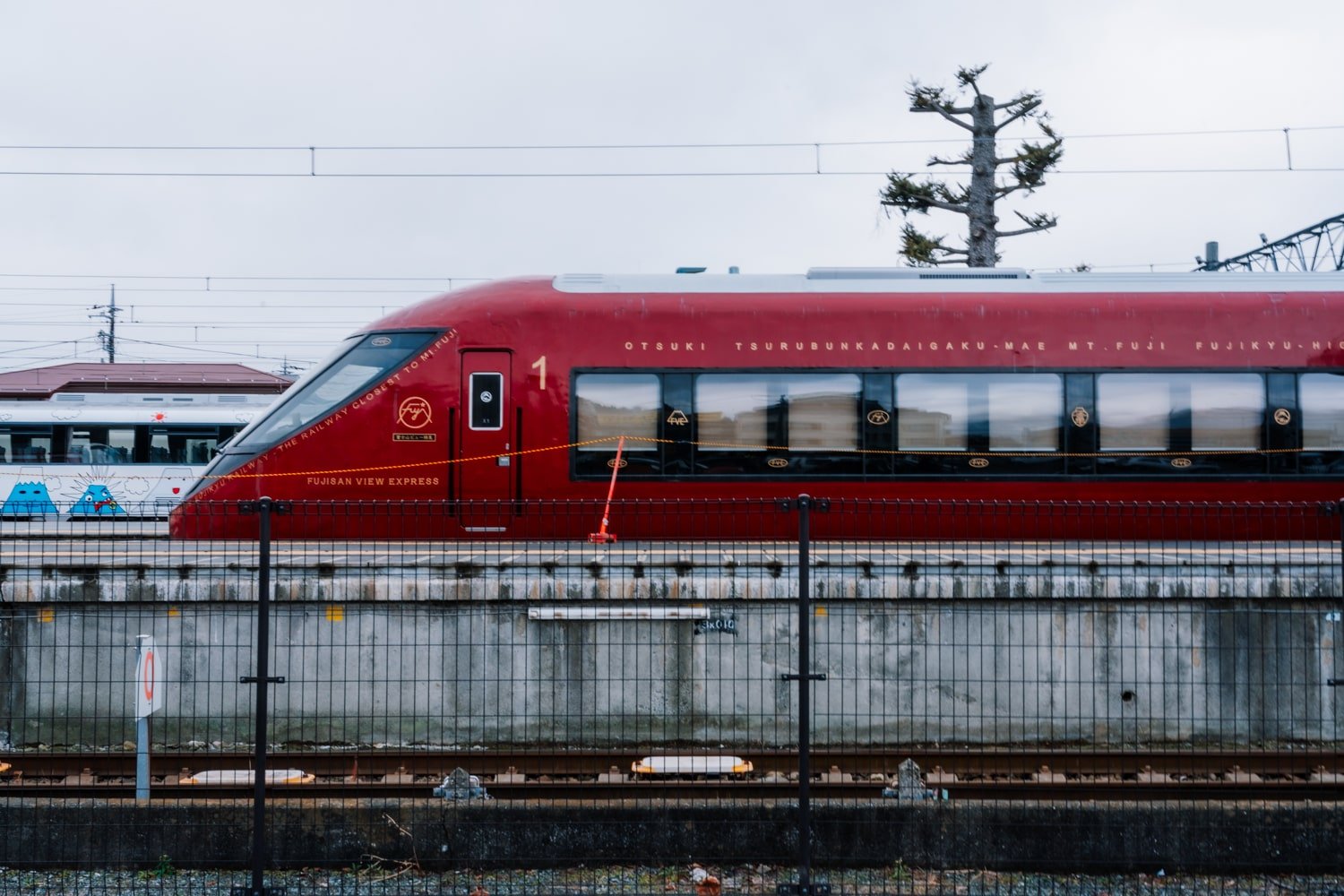
13. Metro/Subway lines may merge: Stay on the Train!
In Japan, some metro and subway lines seamlessly connect with other lines operated by different companies, allowing the same train to continue onto a new route without requiring you to transfer. I’ve had this happen to me in both Tokyo and Osaka.
For example:
- Tokyo Metro Fukutoshin Line → Tokyu Toyoko Line
- Hankyu Kyoto Line → Osaka Metro Sakaisuji Line
When this happens:
- Double-check your destination
Look at the destination displayed on the train or station screens to ensure it’s going where you need. - Stay on the train
If the train switches lines and your stop is along the new route, there’s no need to get off. You can simply stay onboard and let the train take you there. - Your fare is calculated automatically
If you’re using an IC card like Suica or Icoca, the system calculates your fare automatically, even when switching operators. Just tap out as usual.
14. Beware of cyclists in Japan (seriously)
While Japan is known for its strict adherence to rules and order—like neatly following walking directions in train stations or queuing in perfect lines—cyclists often seem to operate in their own world, which is so interesting!
Whether it’s zipping through narrow sidewalks, riding against traffic, or beeping through crowds, cyclists in Japan can be surprisingly unpredictable.
Stay alert, especially on crowded streets or shared pedestrian paths, where bikes can appear out of nowhere!
And if you yourself are taking a bike tour in Tokyo, for example, stick to the left of traffic.
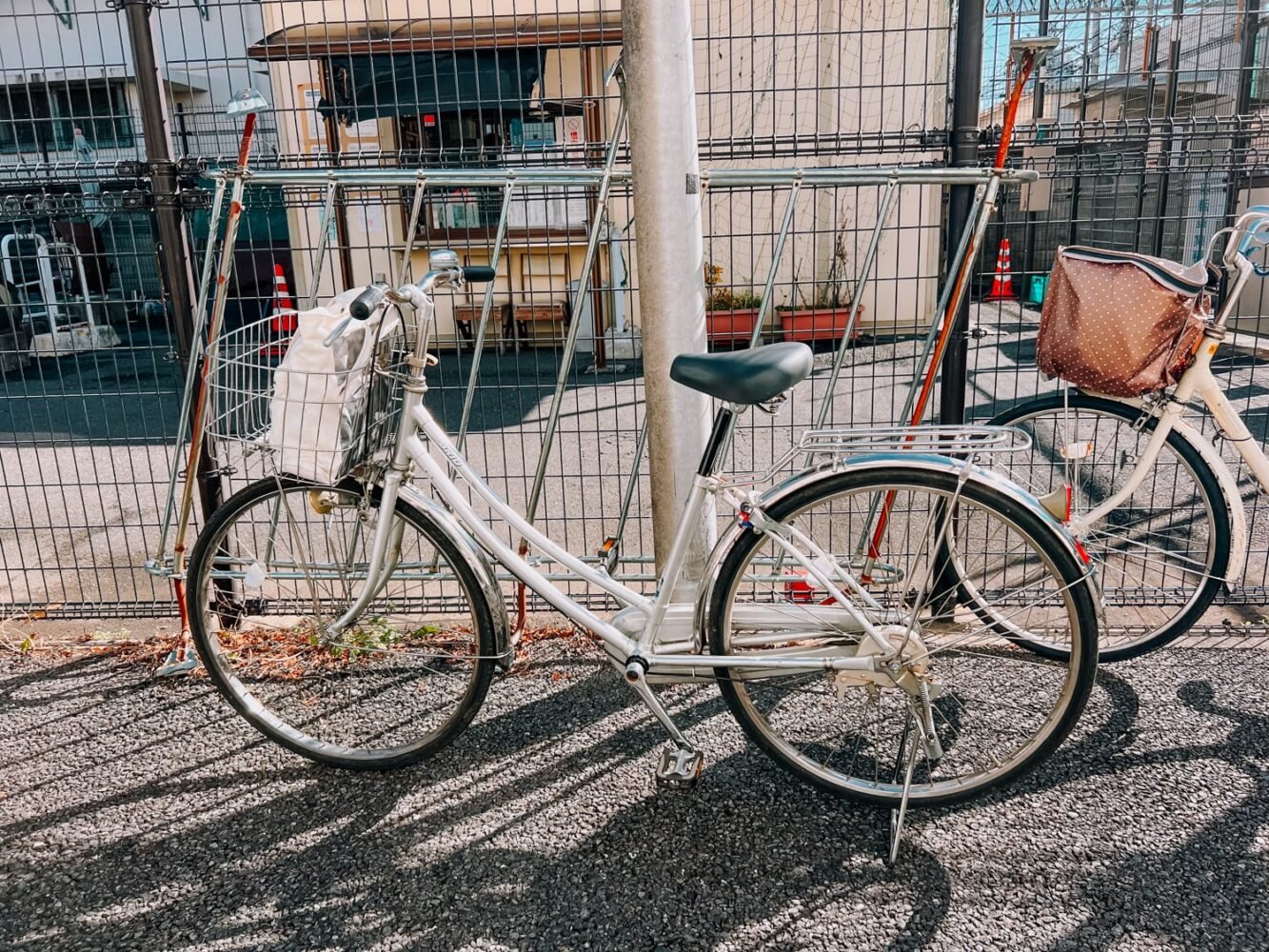
15. You need an international driver’s license to rent a car
You need a valid international driver’s permit to rent and drive a car in Japan.
If you’re from the USA, you can quickly get one same-day at an AAA office. It costs something like $30 and is good for one year.
You even need this for driving the Mario Kart-like karts in Tokyo (a popular but unnecessary activity IMO).
Japanese Cultural Etiquette to Practice & Respect
16. No eating while walking
Avoid eating or drinking in crowded public spaces!
17. Bring your own trash bag
Bring your own mini trash bag with you everywhere (keep one from the convenience stores when they pack your items). There are no public trash cans in Japan!
I once naively asked an elderly woman at the train station counter if I could throw my empty juice bottle in her office trash can. She gently told me no and to go back to the store where I bought it and throw it away there. Lesson learned!
This is very typical in Japan—purchase, eat/drink, and throw away rubbish on-site before moving on otherwise you’ll be stuck with your trash all day until you get back to your hotel.
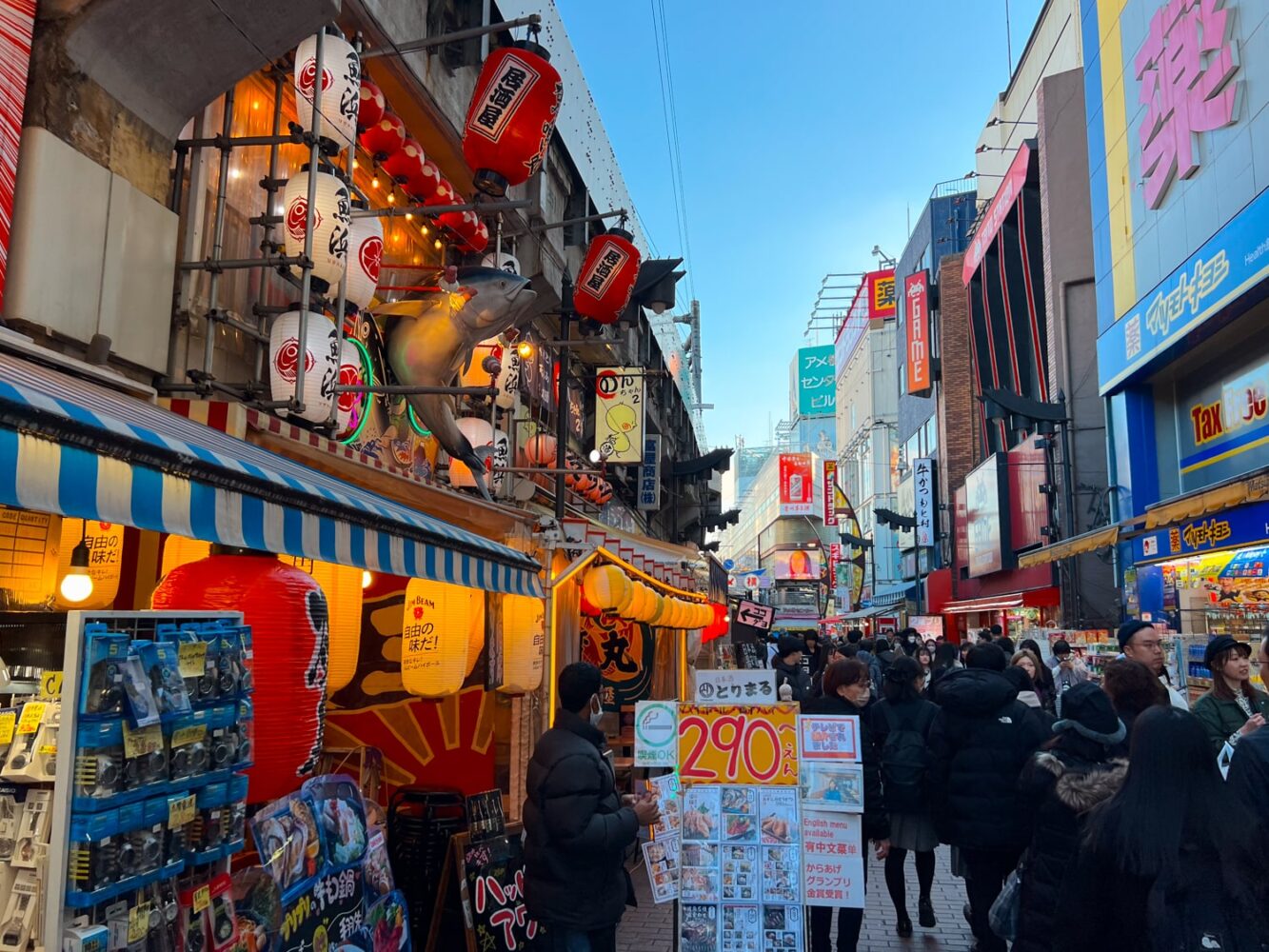
18. Stay quiet on trains and transport
Avoid phone calls on trains—they’re seen as impolite. You can talk with your friend, but be aware of your volume. And wear headphones to watch videos!
Any disturbing noise is seen as disruptive to the community and others, so it’s better to practice mindfulness when in doubt.
19. Don’t tip
Tipping is not customary in Japan!
They will quite literally chase you down to return even a single cent they owe you.
A simple thank you (arigatou gozaimasu), is best for good service. A little bow goes a long way, too!
20. Practice Politeness
You can bow slightly when greeting or thanking someone. The Japanese don’t fold their hands like namaste—leave that gesture for when you’re visiting South Asia (Nepal and India).
You can say Sumimasen to initiate asking a question or saying “excuse me” or “sorry” to a Japanese person.
A good rule of thumb is to be generously respectful. The Japanese will still find a way to be 10x more respectful (in most cases). 😅
First Time Dining in Japan
21. Practice table manners
There are two Japanese phrases to use at meal time.
First is “Itadakimasu” which is polite to say before your meal/when receiving your meal.
After a good meal, when leaving, you can say, “gochisousama-deshita,” which translates to, “Thank you for the service and delicious meal.”
Also Read: 19+ Must-Try Foods to Eat in Japan (Japanese Food List!)
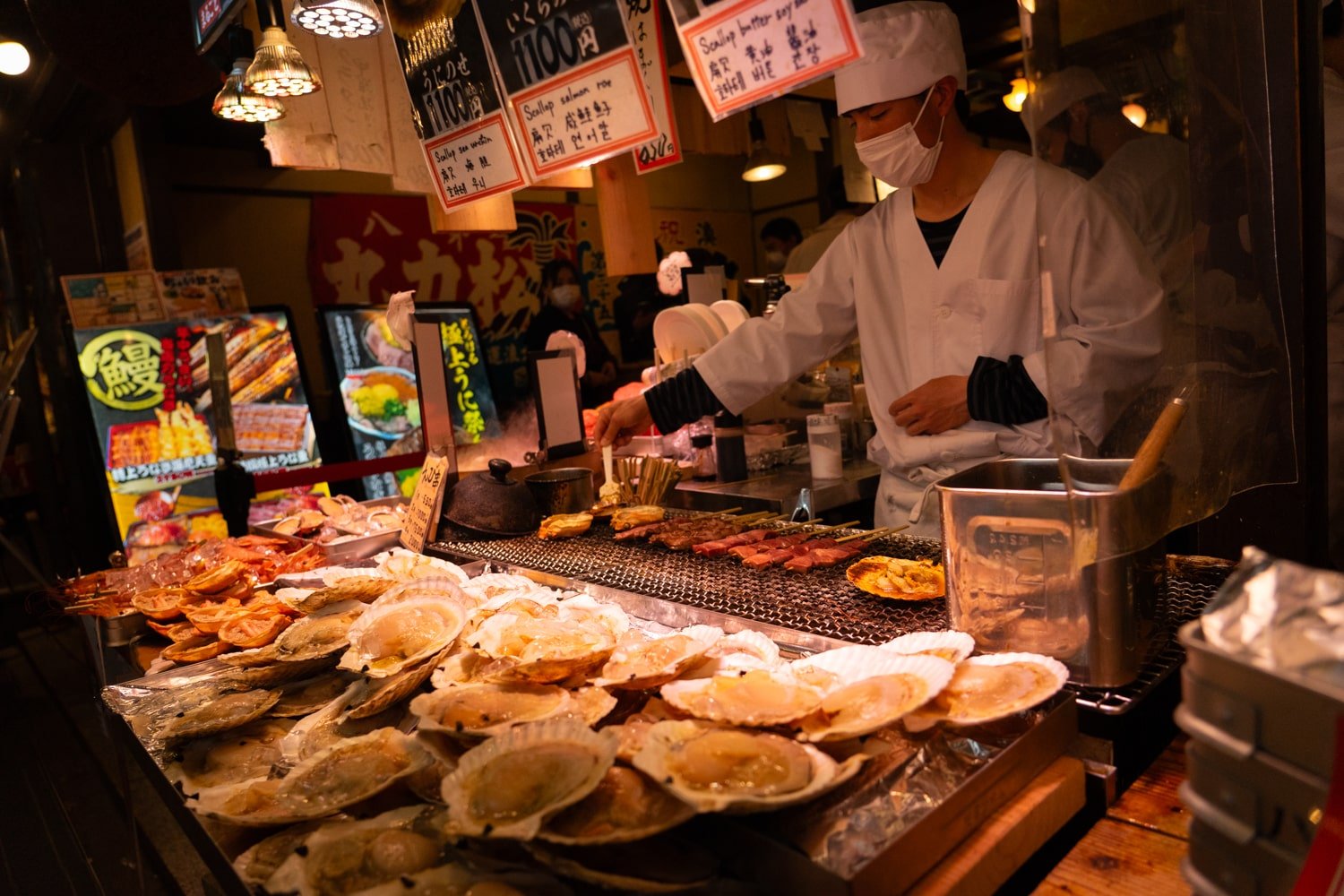
22. Slurping noodles: reality or stereotype?
Slurping in Japan is definitely not a stereotype. When you enter a noodle restaurant (be it soba, udon, or ramen…), you will 100% hear loud, proud slurping.
Slurping is not rude! Rather, it shows your respect and gratitude to the chef for a slurp-inducing meal.
23. When you can’t understand the menu…
Not understanding the menu will happen if you go off the beaten path. Sometimes, even though Japanese restaurants have English menus, they won’t display them outside.
You can type on Deepl or your translator app, “Do you have an English menu?”
If they say no, you can (if you’re feeling up to it), ask a second question based on the menu photos: “Is there a dish you would recommend me? I am vegetarian, I don’t like squid…”).
Sometimes, trusting the locals is your best option when you’re in a situation where Google Lens isn’t accurately translating the menu but you don’t want to order blind just in case you end up with horse sashimi… 😳
24. Take advantage of Konbini (Convenience Stores) in Japan
Convenience stores (7-Eleven, FamilyMart) are a must-experience for first-timers in Japan!
They are great for snacks, meals, and drinks and are your go-to for everything convenient and cute.
Handy tip: You can use your IC card balance to pay for items at konbini in Japan!
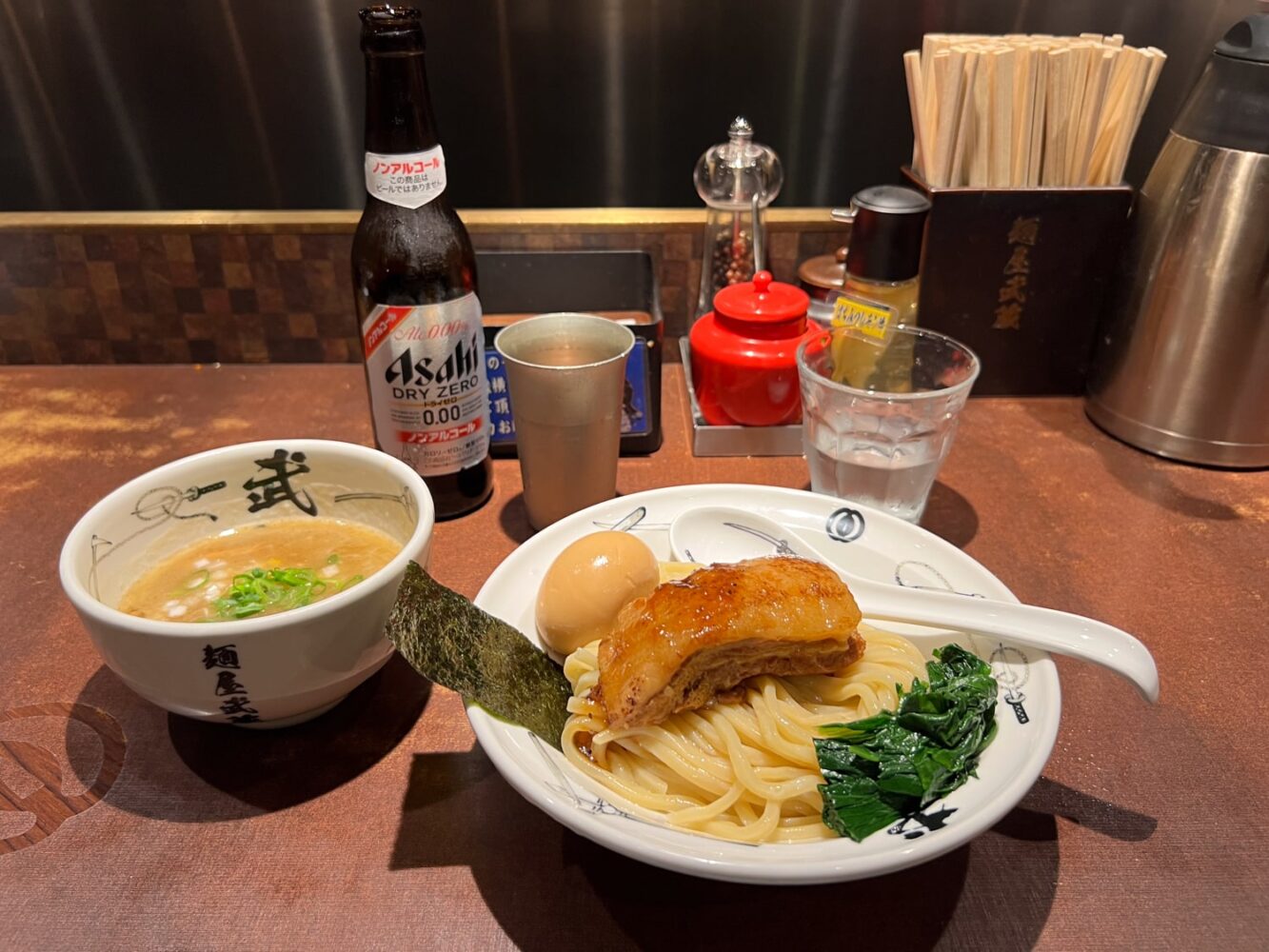
25. Take out yen for shops and cafes
Despite Japan’s technology, many restaurants and small shops are cash-only.
You can withdraw yen (for the best rates) directly from ATMs at the airport or even inside 7/11s. You’ll receive yen in 10,000 bills (around $60-65) when you do.
PS — When taking out cash from an ATM abroad, including in Japan, always choose to decline the ATM’s conversion rate.
26. Shops and eateries close early
Japanese shops and eateries close early, sometimes as early as 6–7 PM, so plan meals accordingly!
There were many times when I had planned to eat out late, only to discover that everything, apart from a few remote izakayas, was closed.
In those moments of need, you can count on a konbini! 😅
Packing & Essentials for First-Timers
27. Prioritize comfortable walking shoes
You’ll walk a lot—on average, around 20,000 steps per day! So pack and wear comfortable shoes.
Many first-timers to Japan don’t realize how spread out attractions are, even if you take public transport.
If you’re not used to lengthy periods of activity, either train up before your trip or plan frequent breaks throughout the day—park benches, cafes, small temple visits, etc.
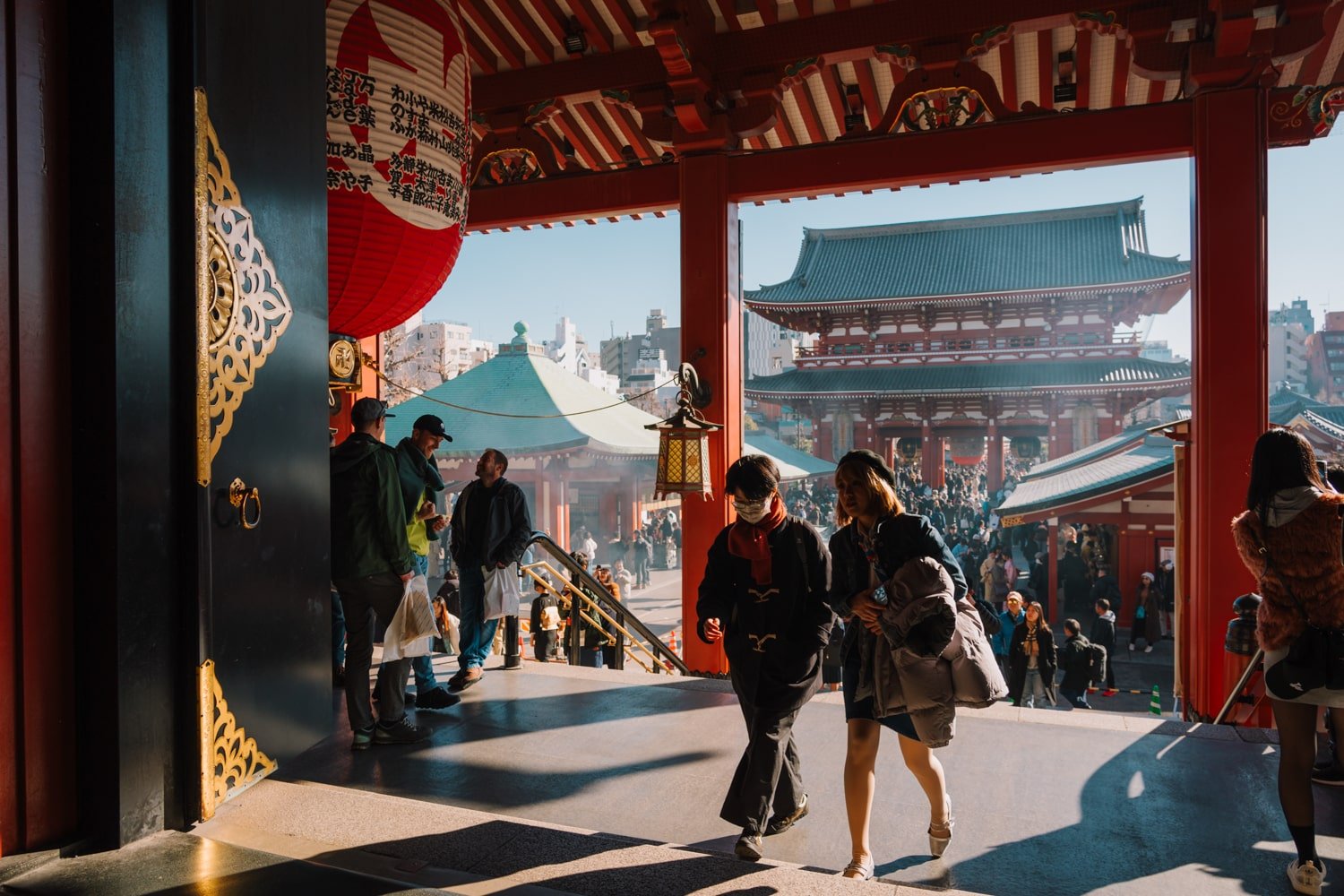
28. Pack light, then lighter (& women—cover your chest/shoulders)
You will be surprised at how little of your wardrobe you’ll actually wear.
Comfort and convenience when visiting Japan are much more important than fashion (from my experience and those I’ve known who visited).
On that note, if you pack light on your way, you’ll have more room for shopping (go to Uniclo!!) and space for meaningful souvenirs in your luggage.
Besides, most hotels and even capsule hotels in Japan will have laundry facilities.
For women, dress modestly, covering shoulders and chest.
While Japanese girls show legs, showing shoulders with thin straps is considered more suggestive and can attract unwanted stares.
Tourist Spots & Avoiding Crowds
29. Early birds get the worm
When in doubt, rise early and often!
Visiting popular places, such as Fushimi Inari or Arashiyama in Kyoto, early in the morning will help you avoid the bulk of the crowds (you can still expect them to be busy in some way).
Even these overcrowded spots have their secrets. For example, few people actually complete the Fushimi Inari trail that goes around the mountain and back. The majority of people stick to the temple, but if you dare to go a bit deeper, a bit further, you’ll find yourself away from crowds at all.
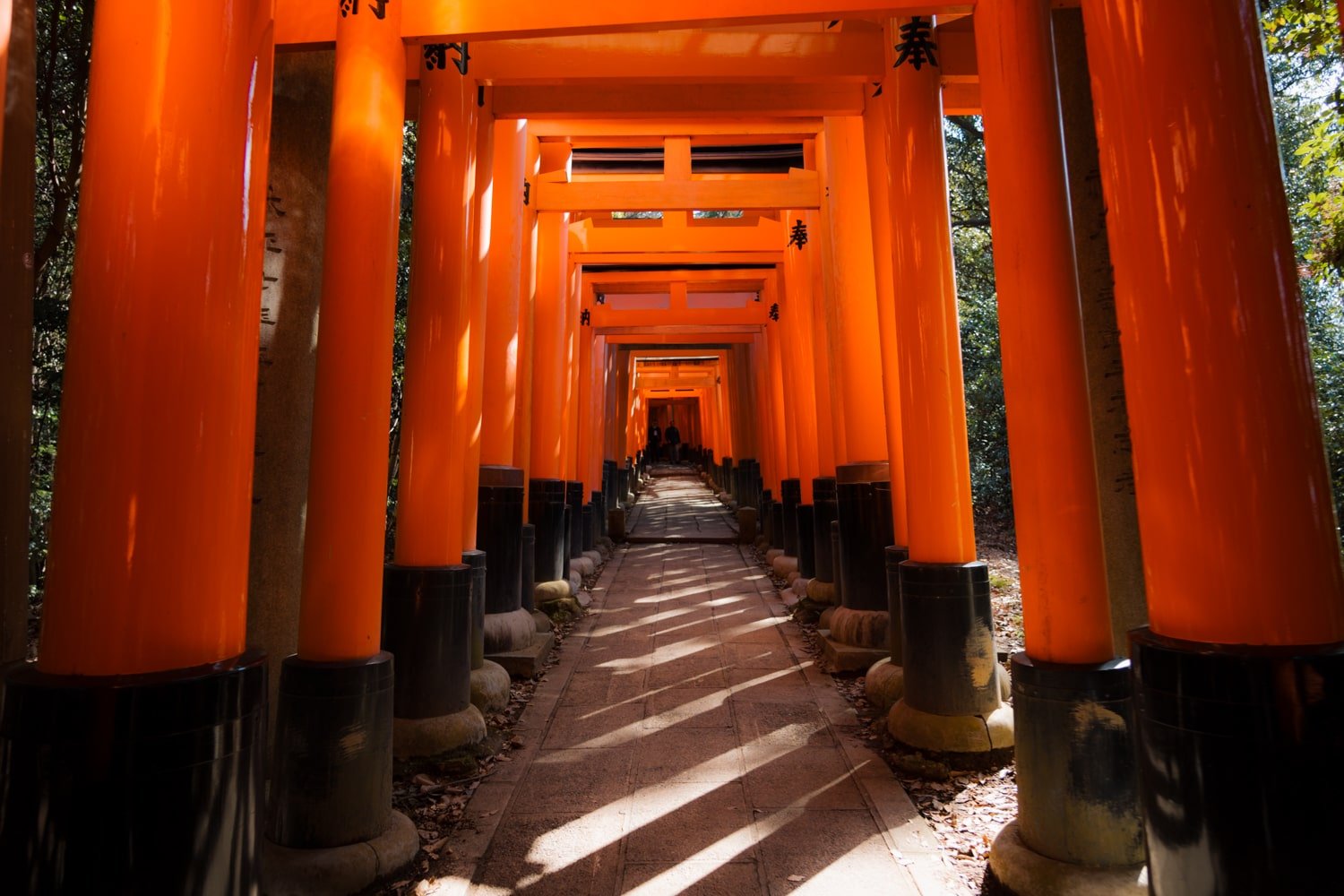
30. Stay in underrated neighborhoods away from the hotspots
Wander off the main paths to discover hidden gems and escape tourist hotspots by staying in underrated neighborhoods.
In Tokyo, for example, you don’t need to stay in Shibuya or Shinjuku—in fact, I’d avoid it. Instead, get curious about other neighborhoods that have so much more to offer than nightlife.
I love staying in East Tokyo for this reason (Ueno, Asakusa, Kuramae, Bakurocho, Yanaka, etc).
Japan Weather Tips
31. Rainy day etiquette
When it rains in Japan, the streets become crowded with umbrellas. ☔️
It is common for Japanese to travel with or carry a long umbrella, making metro floors extremely slippery.
You’ll have to leave your umbrella in a restaurant bin, which is fine. The problem is that all the umbrellas look the same! Tie your hairband around the handle to find yours (or not lose the hotel’s).
When sad weather upsets your travel plans, there is so much to do that you can quickly pivot. Instead, focus on museums, shopping, or indoor activities like teamLab.

32. Heat & humidity of Japanese summers
Japan’s summers are brutally hot and humid. Having spent the summer in Tokyo, I have now experienced a new level of heat I didn’t know was possible.
The Japanese have devised very clever ways to combat humidity, such as vests with built-in vents, cooling wipes, portable fans, cooling mist sprays, and more.
I recommend carrying your own water bottle with you, but if you don’t, vending machines are everywhere for cheap drinks.
Other Advice for First-Timers in Japan
33. Power adapters
Japan uses Type A plugs and 100V electricity (aka the same two prongs as the United States). Check your devices’ compatibility, but I found that I didn’t need any adapters for my time in Japan.
But if you do, any underground mall, airport, or konbini will have what you need!
34. Don’t be scared of Japanese toilets 🫣
Haha, I love that Japanese toilets have become such a thing. 😅
I thoroughly enjoy the experience of a Japanese toilet! The bum wash and “female wash” are two buttons you’ll come to know and love as well (I hope).
35. Make your Japan trip truly YOURS
Focus on what excites you—whether temples, hiking, food, or pop culture—and make your trip unique rather than following someone else’s itinerary to a T (I know—paradoxical advice from a travel blogger, huh!).
While itineraries are great ways to get inspired, you can replicate them while allowing for flexibility and customization.
Japan attracts people for different reasons—anime/manga, food, tradition/culture, tea, onsens… you name it!
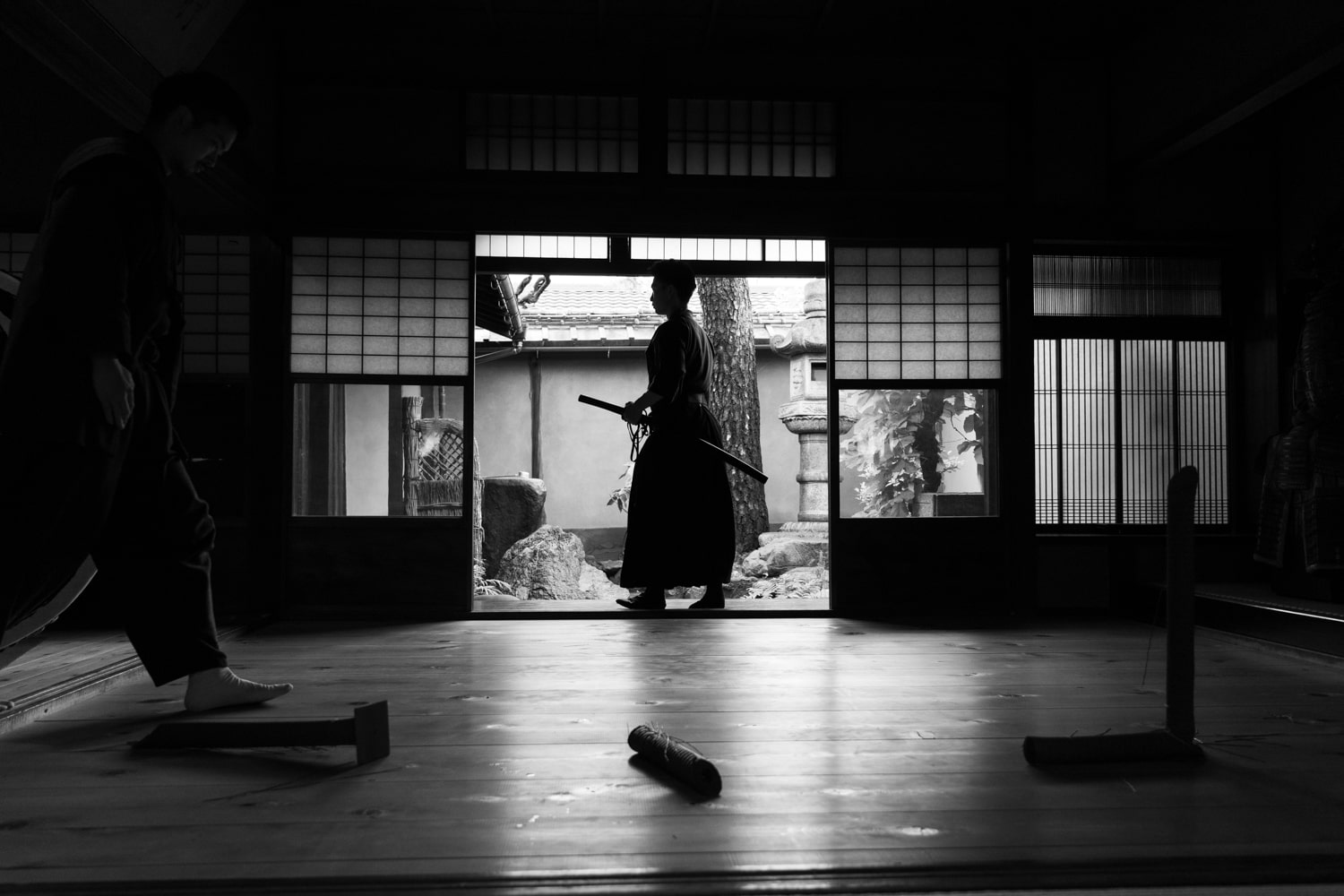
I hope this resource, packed with bite-sized tips, helps you plan your trip as a first-timer in Japan! If you have follow-up questions, please drop them in the comment box below. ☺️ ⬇️
<!–
–>



